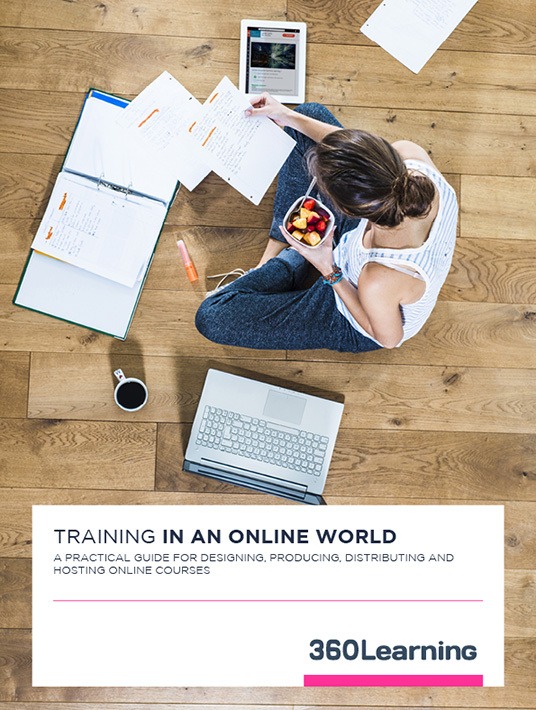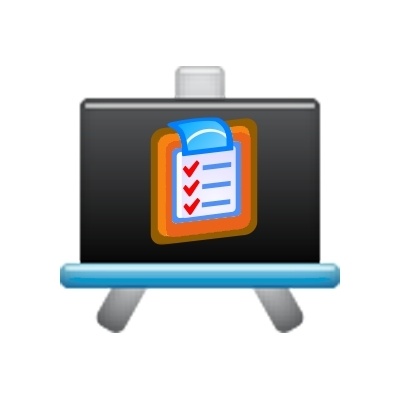Evaluation Methods For Examinations In Online Training Programs
Depending on the type of online training used, evaluation modules will be structured differently. Let us examine two examples below.

In a blended learning course, several different assessments will be used based on course progress. The first course module should be used for a test lasting around twenty minutes. It should contain questions on key course topics and ask them in an entertaining format.
This assessment allows you to do 2 things:
- If results are good, realize that most learners already know what you had planned on teaching team. You can then adapt course content and perhaps discuss more advanced topics.
- If results are poor, reinforce the need for your course and use results to show progress achieved at the end of the course.
At the end of each attended class, you should assess what has been learned during each eLearning module and classroom session. This evaluation is used more for reinforcing acquired knowledge than an actual exam. It should not last more than 15 minutes.
The final exam of a blended learning course should contain questions of various formats and cover all course topics. The exam should last at most 1 hour and can be used in comparison with the first assessment to show what was learned throughout the class.
MOOCs are composed of two exam types: a mid-term and a final exam. The mid-term should incorporate questions on all essential course topics that have been seen previously. They typically last 1 hour and are made up of both closed and at least 1 open question. The latter should be used to evaluate the learner’s capacity to elaborate and structure a response.
The final exam for a MOOC should cover all course material and last from 1 hour 30 minutes to 2 hours and contain at least 2 open questions, in addition to a majority of closed questions.
The evaluation module is adapted based on whether it is for regulatory training, business training, or otherwise, but is based on similar tools.
- Open Questions
The learner responds freely. A rich text editor is available to add bold, italics, hyperlinks, or attach documents to their answer. Once submitted, the exam is sent to a corrector that can annotate their response. Upon validation, the learner is notified via email about the quality of their response, whether good or bad. Keep in mind that with this type of question, learners feel that they are listened to and tend to get more involved. - Closed Questions
Includes true/false, multiple choice, yes/no, matching, ranking, fill-in-the-blanks, etc. These more playful formats are perfectly adapted to online courses. - Projects
Another, less frequently used, way to evaluate students is by having them complete a project related to the course. Learners, either individually or in groups, carry out a project. They are to provide text or audio notes and are evaluated based on a presentation of their project at the end of the course. - Min-Max Time Allowance
An essential tool, setting a minimum or maximum time allowance to complete a training module. An ideal way to prevent cheating. - Minimum Score
Another essential tool, defining the minimum score needed to pass the course.
How Reliable Are Online Evaluations?
Most online evaluations are based on trusting students. Most of the time, this position is perfectly justified. As part of continual vocational training, the employee is responsible for what they learn or not, cheating makes little sense. When it comes to more important exams, during regulatory training, for example, instructors can use several tools to reduce attempts at cheating:
- Minimum Time
A perfect tool if the instructor has an idea of the minimum amount of time needed to complete the exam. Students will not have the necessary time to look up answers on the Internet. For instructors, it is easy to spot cheating. For example, a student that has an abnormally high rate of correct answers at the beginning of the test but did not have time to complete the exam. - Webcam Monitoring
Today, new services like Proctor-U can monitor your online exams. They allow you to supervise students via their webcam. An algorithm that alerts examiners to suspicious activity analyzes student screens, as well as eye and hand movements.
If neither of these solutions is adequately adapted to your needs, you should know that many exams for online training courses still take place in person, in specialized centers. You can choose to do this in your offices with your own examiners, or through a specialized agency or exam center.
Certification, The Crowing Achievement Of Exams
Online, you can systematically award certificates. They attest that a student has obtained the minimum score and has therefore successfully completed a course. Though they have no legal value, they retain symbolic value that is tied to your brand and training organization. It was MOOCs and major American universities that first popularized this mechanism.
Online certificates drive employee engagement. It is a reward; a form of “proof” of their hard work they can “keep” after the course has ended. For certain subjects, it also guarantees credibility. Increasingly, those who have completed a MOOC display the information on their LinkedIn or Viadeo profiles to reinforce their expertise on “certified” topics.
Driving engagement and employability, certification is becoming the norm for online courses. Fortunately, modern LMSs can generate them automatically with unique ID numbers to ensure authenticity. They also allow you to export the information directly to professional social networks including LinkedIn or Viadeo.
If you want to learn more about online training, download the eBook Training In An Online World.








